
How to Use GLYPHMOD-MICRO-SD: Examples, Pinouts, and Specs
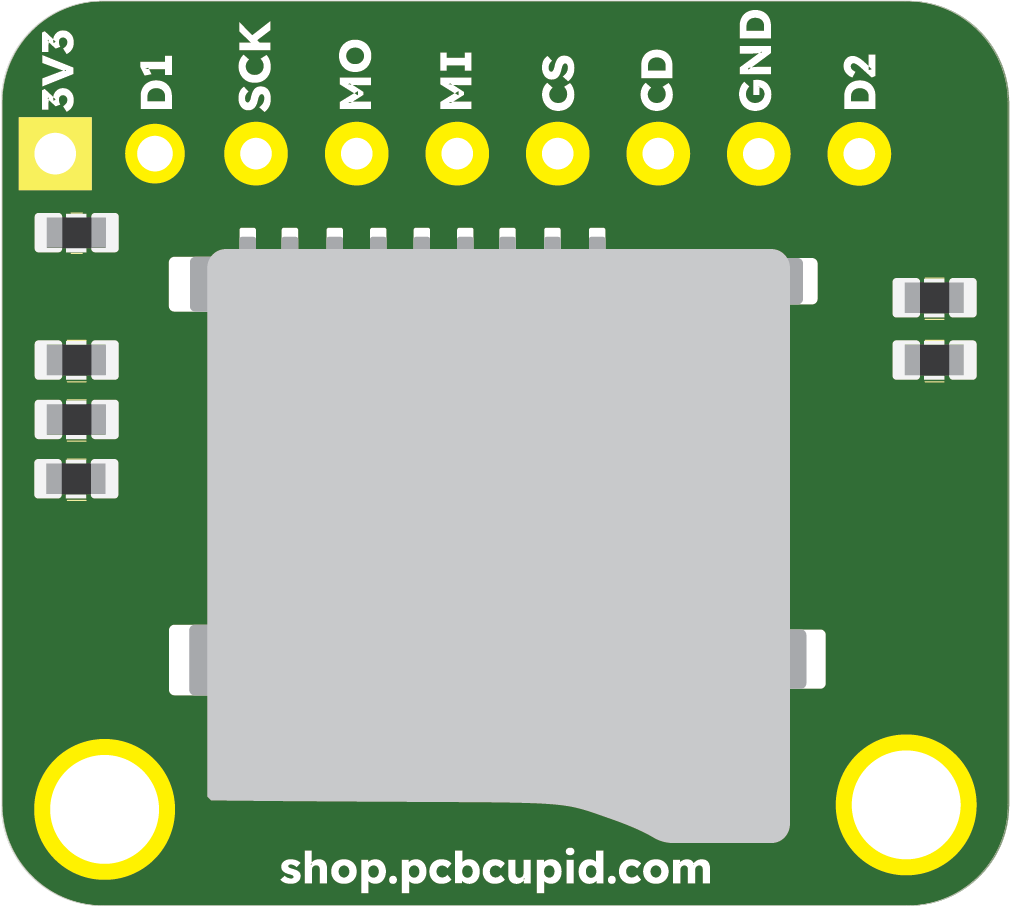
 Design with GLYPHMOD-MICRO-SD in Cirkit Designer
Design with GLYPHMOD-MICRO-SD in Cirkit DesignerIntroduction
The GLYPHMOD-MICRO-SD (Manufacturer Part ID: GM-003) is a micro SD card module developed by PCBCUPID. This module is designed to provide a simple and efficient way to add data storage and retrieval capabilities to a wide range of electronic projects. Its compact size and ease of integration make it an ideal choice for applications requiring portable data logging, file storage, or multimedia playback.
Explore Projects Built with GLYPHMOD-MICRO-SD
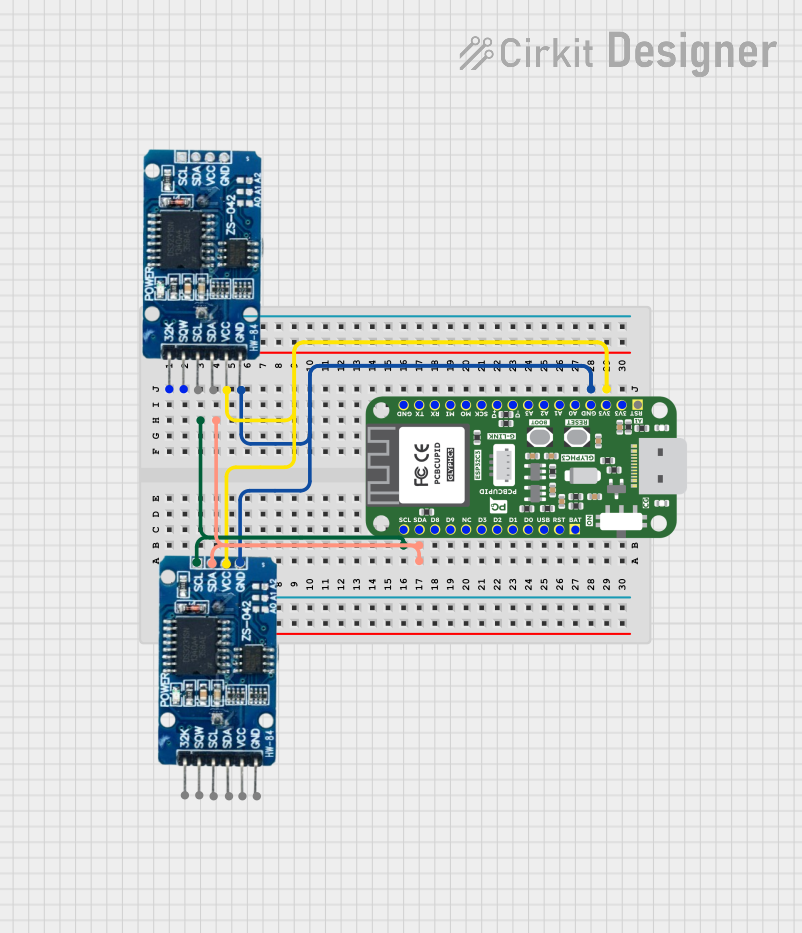
 Open Project in Cirkit Designer
Open Project in Cirkit Designer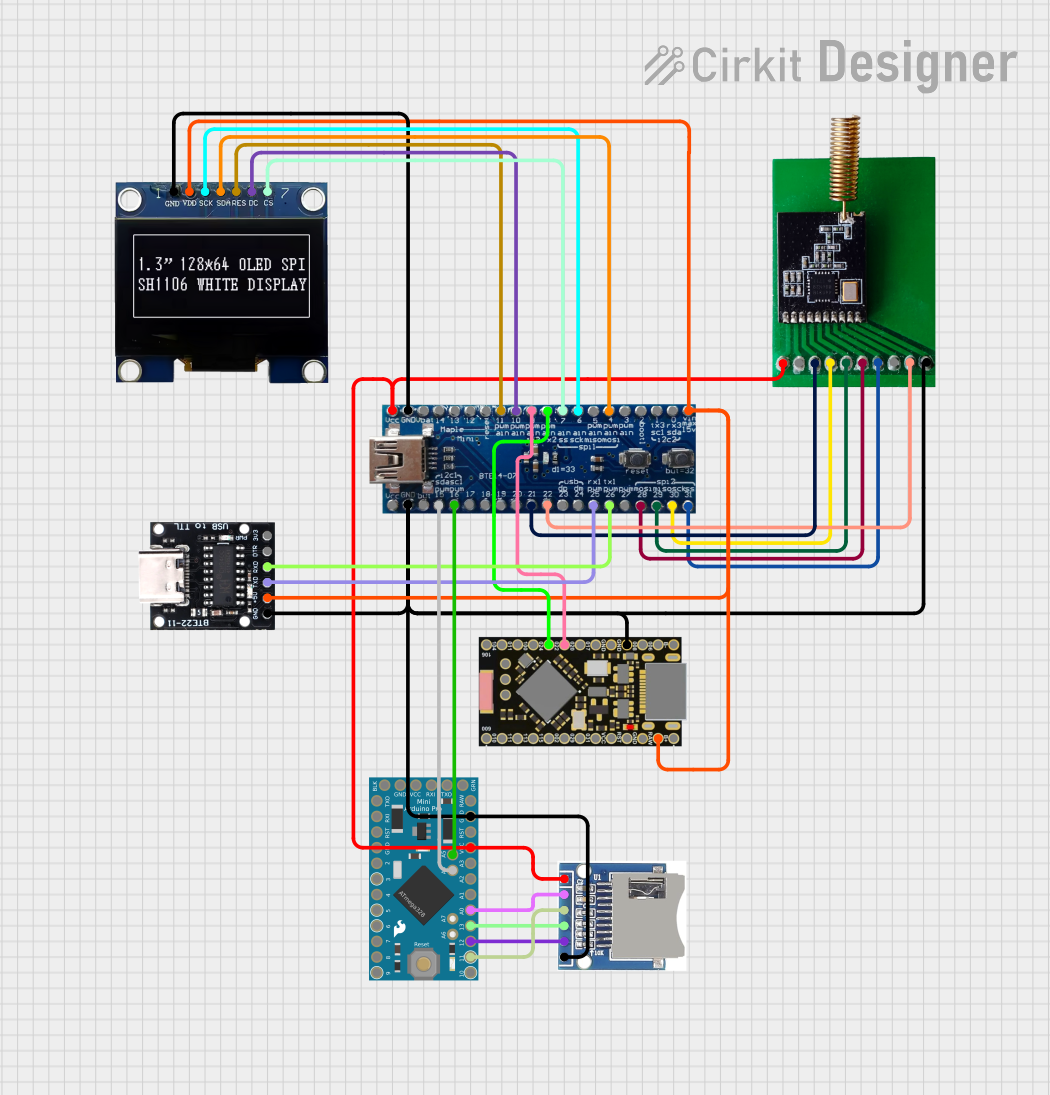
 Open Project in Cirkit Designer
Open Project in Cirkit Designer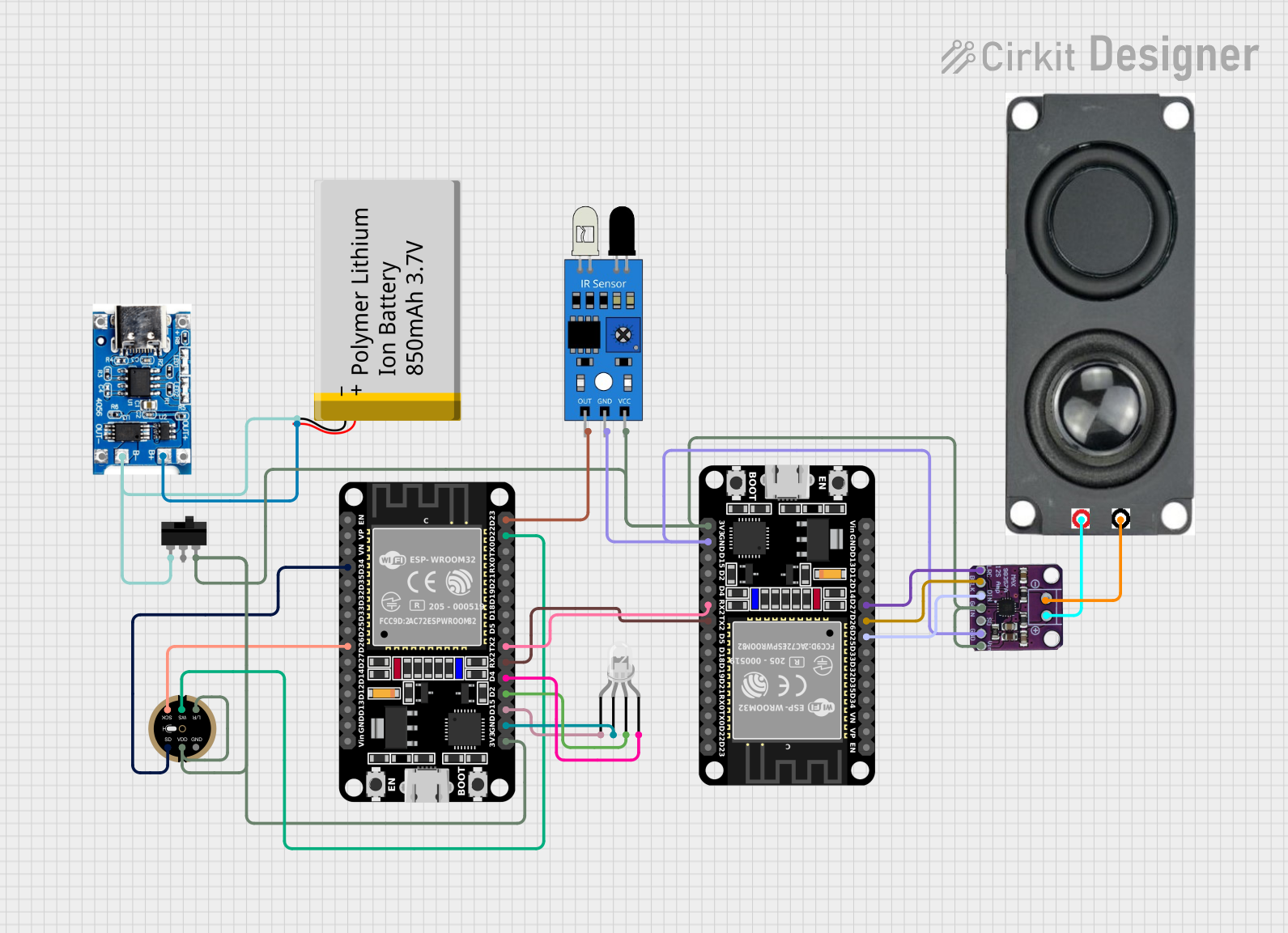
 Open Project in Cirkit Designer
Open Project in Cirkit Designer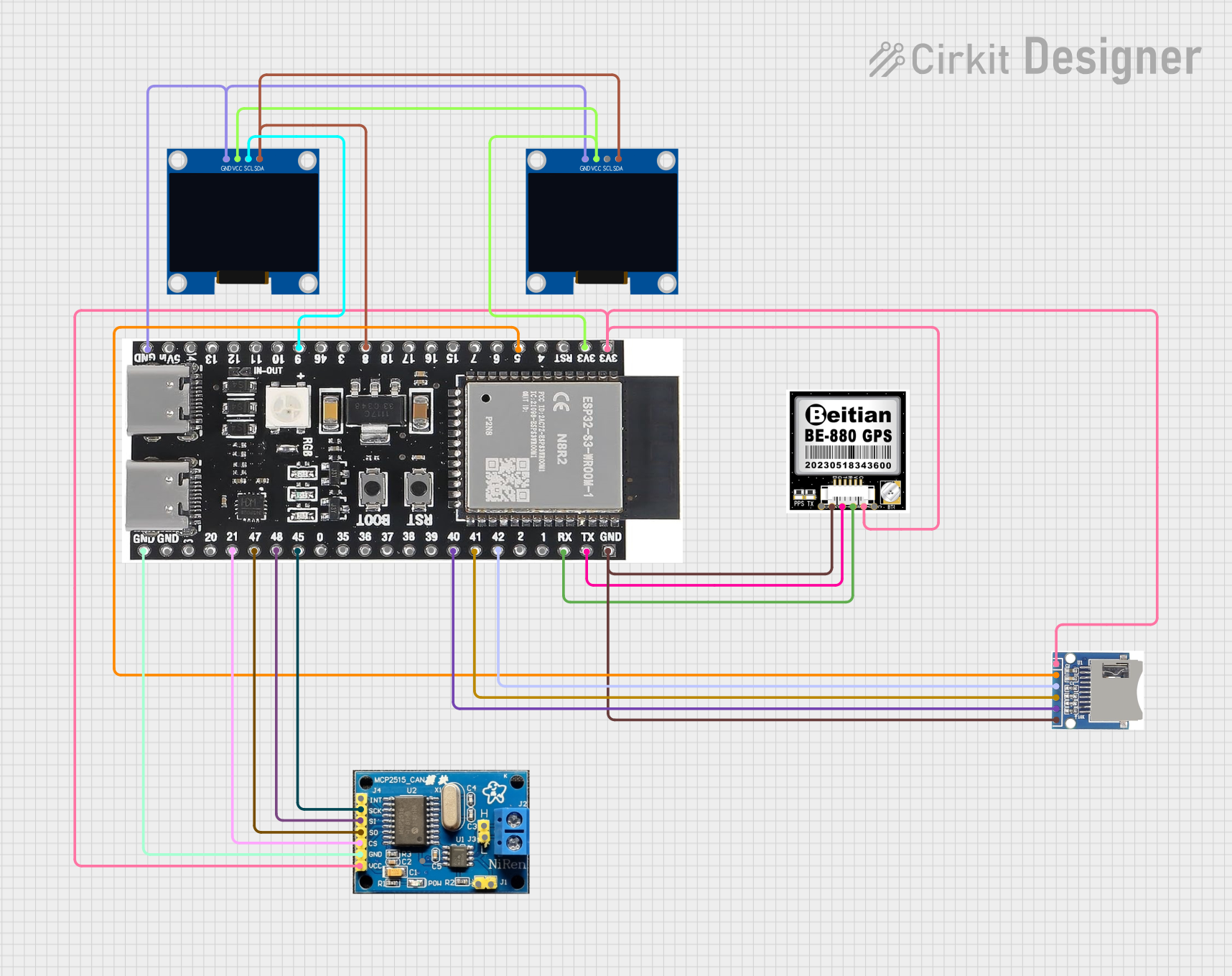
 Open Project in Cirkit Designer
Open Project in Cirkit DesignerExplore Projects Built with GLYPHMOD-MICRO-SD

 Open Project in Cirkit Designer
Open Project in Cirkit Designer
 Open Project in Cirkit Designer
Open Project in Cirkit Designer
 Open Project in Cirkit Designer
Open Project in Cirkit Designer
 Open Project in Cirkit Designer
Open Project in Cirkit DesignerCommon Applications and Use Cases
- Data logging for IoT devices (e.g., temperature, humidity, or GPS data)
- File storage for embedded systems
- Multimedia storage for audio or video playback
- Bootable storage for microcontroller-based systems
- Portable data transfer between devices
Technical Specifications
The GLYPHMOD-MICRO-SD module is built to interface seamlessly with microcontrollers and development boards such as Arduino, Raspberry Pi, and ESP32. Below are its key technical details:
Key Technical Details
| Parameter | Specification |
|---|---|
| Operating Voltage | 3.3V to 5V |
| Communication Protocol | SPI (Serial Peripheral Interface) |
| Supported SD Card Types | microSD, microSDHC (up to 32GB) |
| Current Consumption | ~20mA (idle), ~100mA (active) |
| Operating Temperature | -25°C to 85°C |
| Dimensions | 25mm x 20mm x 2mm |
Pin Configuration and Descriptions
The GLYPHMOD-MICRO-SD module has a standard 6-pin interface for easy connection to microcontrollers. Below is the pinout:
| Pin Name | Pin Number | Description |
|---|---|---|
| GND | 1 | Ground connection |
| VCC | 2 | Power supply input (3.3V to 5V) |
| MISO | 3 | Master In Slave Out - Data output from the SD card to the microcontroller |
| MOSI | 4 | Master Out Slave In - Data input from the microcontroller to the SD card |
| SCK | 5 | Serial Clock - Clock signal for SPI communication |
| CS | 6 | Chip Select - Activates the SD card module for communication |
Usage Instructions
The GLYPHMOD-MICRO-SD module is straightforward to use in a circuit. Follow the steps below to integrate it into your project:
Connecting the Module
- Power Supply: Connect the
VCCpin to a 3.3V or 5V power source and theGNDpin to ground. - SPI Interface: Connect the
MISO,MOSI,SCK, andCSpins to the corresponding SPI pins on your microcontroller. - Pull-Up Resistors: Ensure that the SPI lines have appropriate pull-up resistors if required by your microcontroller.
Example: Using with Arduino UNO
Below is an example of how to use the GLYPHMOD-MICRO-SD module with an Arduino UNO to read and write data to a microSD card.
Circuit Diagram
- Connect the module's
VCCto the Arduino's5Vpin. - Connect the module's
GNDto the Arduino'sGNDpin. - Connect the module's
MISO,MOSI,SCK, andCSpins to the Arduino's12,11,13, and10pins, respectively.
Arduino Code Example
#include <SPI.h>
#include <SD.h>
// Define the chip select pin for the SD card module
const int chipSelect = 10;
void setup() {
// Initialize serial communication for debugging
Serial.begin(9600);
while (!Serial) {
; // Wait for the serial port to connect (for native USB boards)
}
Serial.println("Initializing SD card...");
// Check if the SD card is available
if (!SD.begin(chipSelect)) {
Serial.println("SD card initialization failed!");
return;
}
Serial.println("SD card initialized successfully.");
// Create and write to a file
File dataFile = SD.open("example.txt", FILE_WRITE);
if (dataFile) {
dataFile.println("Hello, GLYPHMOD-MICRO-SD!");
dataFile.close();
Serial.println("Data written to example.txt.");
} else {
Serial.println("Error opening example.txt for writing.");
}
}
void loop() {
// Nothing to do here
}
Important Considerations and Best Practices
- SD Card Format: Ensure the microSD card is formatted as FAT16 or FAT32 for compatibility.
- Voltage Levels: If using a 5V microcontroller, ensure the module has onboard level shifters to protect the SD card.
- Chip Select Pin: Use a dedicated
CSpin for the module to avoid conflicts with other SPI devices. - Data Integrity: Always close files after writing to ensure data is saved properly.
Troubleshooting and FAQs
Common Issues and Solutions
SD Card Initialization Fails
- Cause: Incorrect wiring or incompatible SD card format.
- Solution: Double-check the connections and ensure the SD card is formatted as FAT16 or FAT32.
File Not Found or Cannot Be Opened
- Cause: Incorrect file path or file permissions.
- Solution: Verify the file name and ensure it matches the case sensitivity of the SD card's file system.
Data Corruption
- Cause: Power loss during file operations.
- Solution: Use a capacitor near the power pins to stabilize the voltage supply.
High Current Consumption
- Cause: SD card in active mode for extended periods.
- Solution: Use sleep modes or reduce the frequency of file operations.
FAQs
Q: Can I use this module with a 3.3V microcontroller?
A: Yes, the module supports both 3.3V and 5V logic levels.
Q: What is the maximum SD card size supported?
A: The module supports microSD and microSDHC cards up to 32GB.
Q: Can I use multiple SD card modules on the same SPI bus?
A: Yes, but each module must have a unique CS pin to avoid conflicts.
Q: Does the module support SDXC cards?
A: No, the module only supports microSD and microSDHC cards formatted as FAT16 or FAT32.